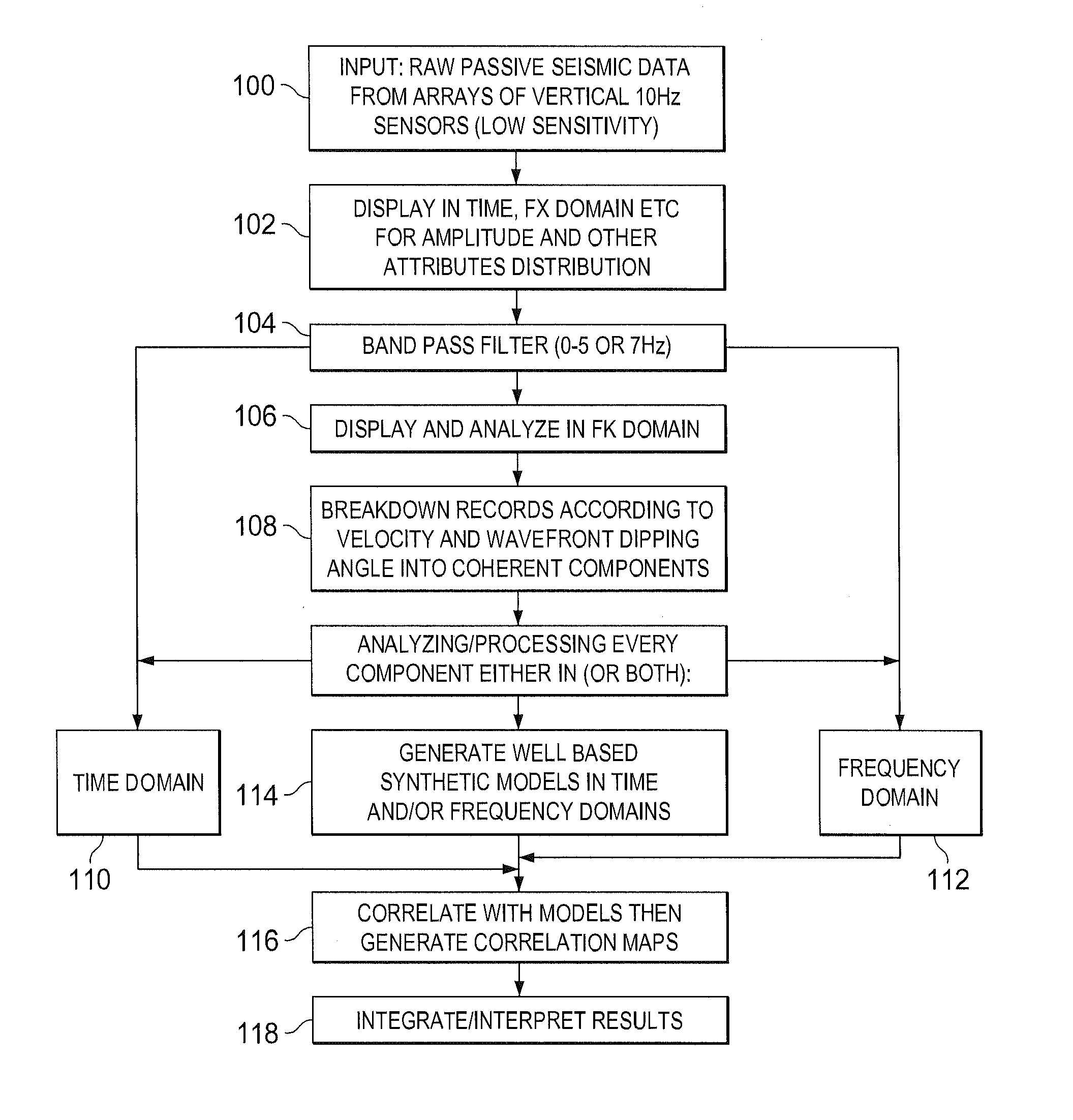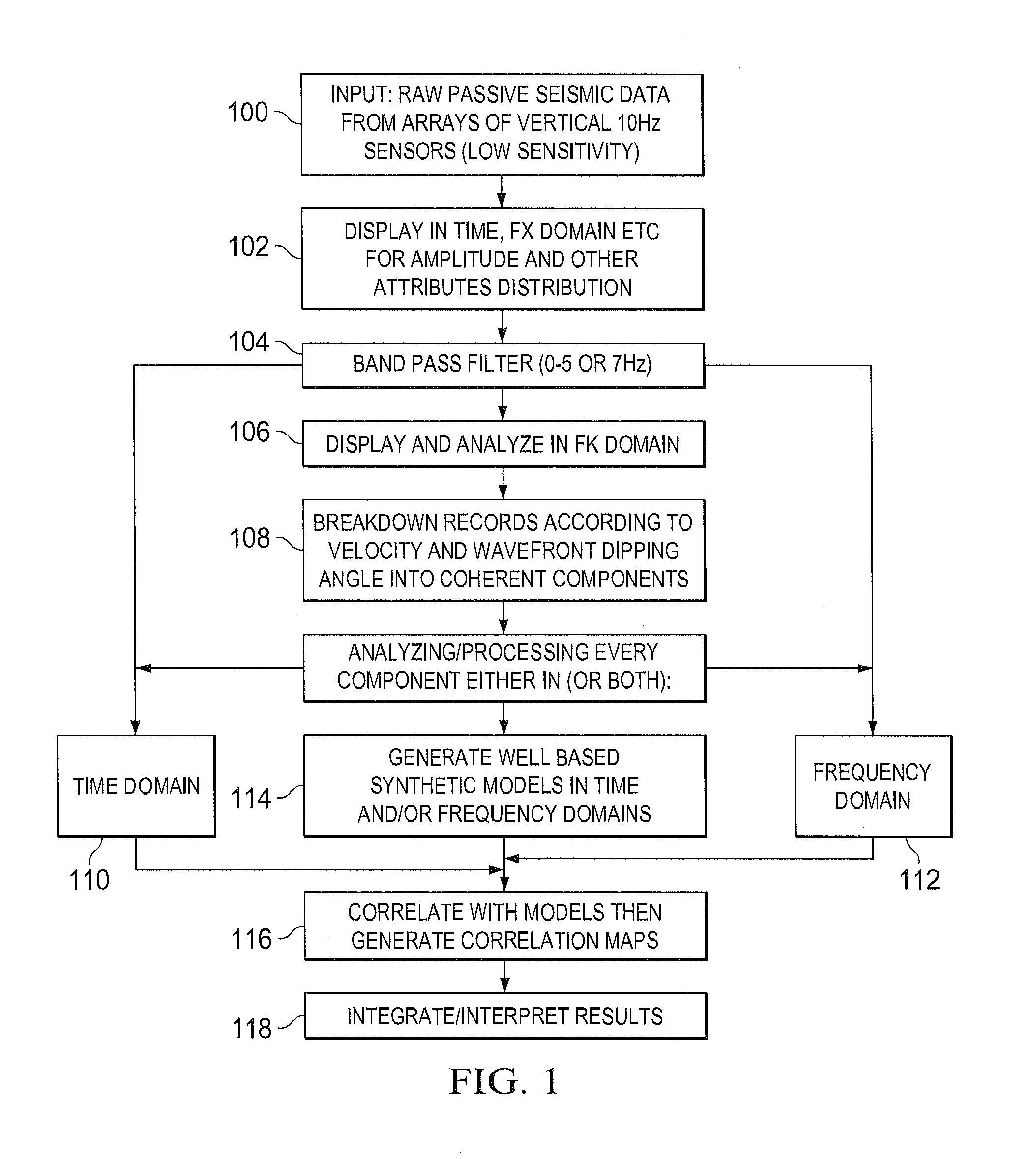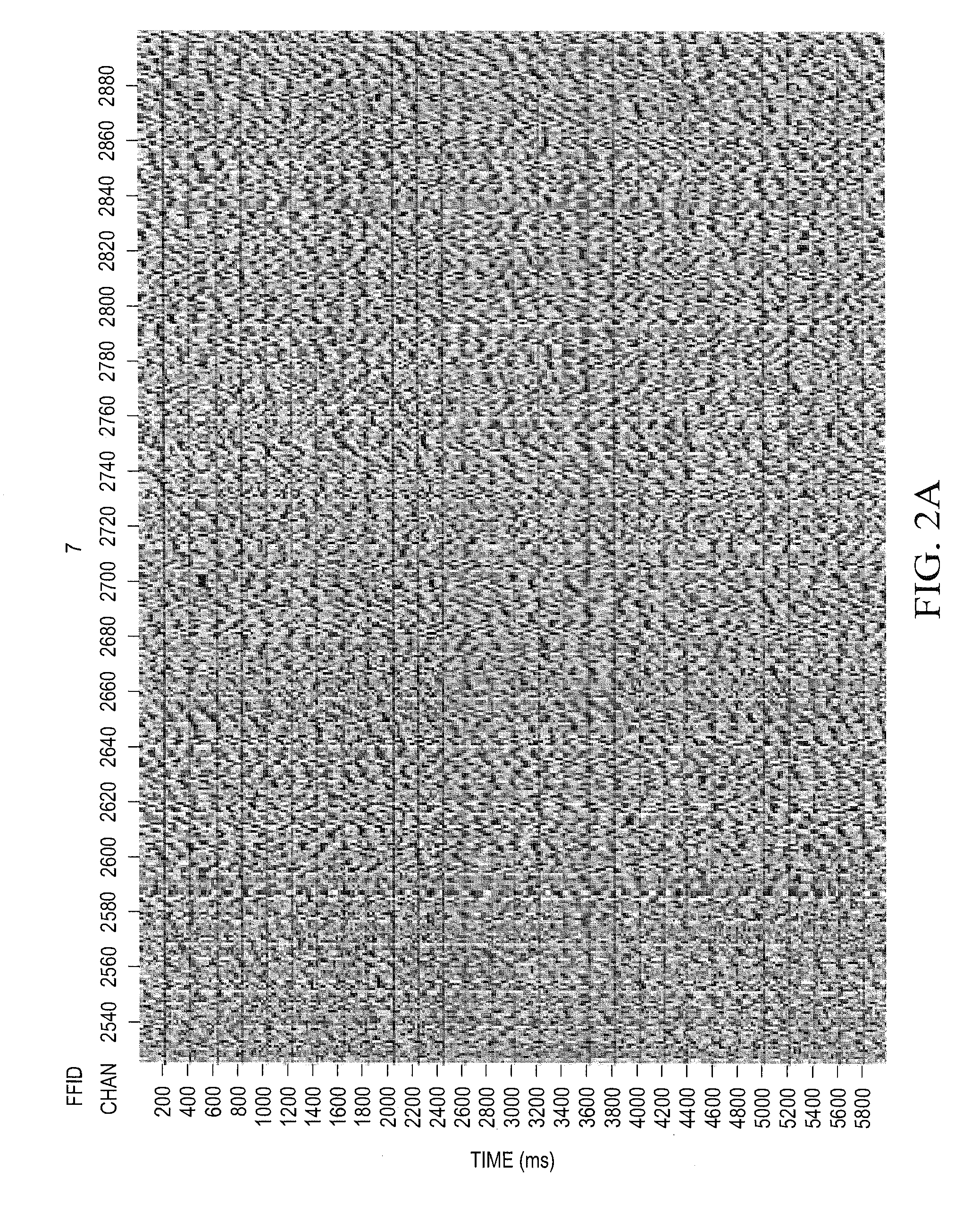Low frequency passive seismic data acquisition and processing
a low-frequency passive seismic and data acquisition technology, applied in the field of low-frequency passive seismic data acquisition and processing, can solve the problems of limited coverage area and density available, limited use of passive 3-c sensors, and high cost of 3-c sensors with built-in preamplifier electronics
- Summary
- Abstract
- Description
- Claims
- Application Information
AI Technical Summary
Benefits of technology
Problems solved by technology
Method used
Image
Examples
Embodiment Construction
[0029]According to the present invention, it has been found that low frequency passive seismic (LFPS) signals can be acquired using conventional 10 Hz single vertical or uniaxial geophones which had previously been considered suitable only for conventional active seismic survey acquisition of the type currently being utilized throughout the industry. The uniaxial or vertical geophones have reduced sensitivity in comparison with the tri-axial or 3-C seismic sensor geophones considered necessary for low frequency passive seismic signal acquisition. Typically, uniaxial sensors have a low sensitivity of, for example, a single sensor can have about 22.8 Volts / meter / second (V / m / s), in comparison with sensitivities of from about 900-4000 V / m / s for tri-axial sensors. So far as is known, it was reported in the industry that uniaxial geophones could not record low frequency passive seismic signals, due to their low sensitivities and inability to amplify such signals. Thus, it was believed tha...
PUM
 Login to View More
Login to View More Abstract
Description
Claims
Application Information
 Login to View More
Login to View More - R&D
- Intellectual Property
- Life Sciences
- Materials
- Tech Scout
- Unparalleled Data Quality
- Higher Quality Content
- 60% Fewer Hallucinations
Browse by: Latest US Patents, China's latest patents, Technical Efficacy Thesaurus, Application Domain, Technology Topic, Popular Technical Reports.
© 2025 PatSnap. All rights reserved.Legal|Privacy policy|Modern Slavery Act Transparency Statement|Sitemap|About US| Contact US: help@patsnap.com



